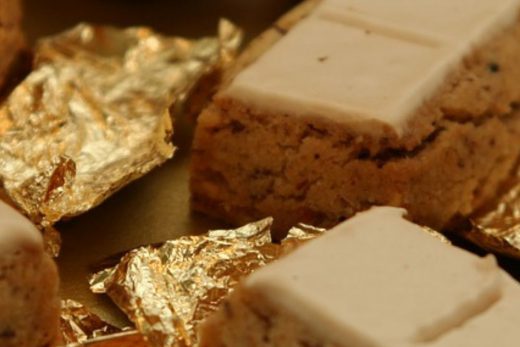Aspirin — This over-the-counter analgesic is commonly added to DIY chemical facial peels in order to provide a boost of salicylic acid, which helps encourage the shedding of the outer layer of skin while providing an effective treatment for acne and psoriasis, among a variety of other skin conditions. You can easily dissolve uncoated aspirin tablets in water and crush them using the back of a spoon to add them to your DIY peels.
Lemon — A natural source of antioxidants, lemon juice is a common additive in a wide variety of homemade facial peels. As you may know, lemon also has lightening properties, which makes it a popular ingredient for skin care masks, peels and products aimed at correcting age spots. Lemon and other citrus juices are quite acidic, they have high pH levels, so for safest results they should be combined with neutralizers, like baking soda.
Baking soda — With its alkaline nature, baking soda can be used as a neutralizer in your homemade chemical peel, ensuring that the acids found in other ingredients — especially citrus juice — don’t dry out or damage your skin.
DIY chemical peel for wrinkles: the egg white peel
Ingredients
1 egg white
½ cup de-seeded cucumber pulp
1 teaspoon lemon juice
Instructions
This DIY chemical peel recipe is very simple. All you have to do is beat one egg white and mix it with cucumber pulp. Add a teaspoon of lemon juice and mix well, creating a spreadable paste.
Apply the finished product to your face and allow it to sit for 20 minutes before rinsing it off with water. The combination of egg whites — which naturally smooths wrinkles — and cucumbers will help de-wrinkle and moisturize the skin at once.
DIY chemical peel for dry skin: the AHA chemical peel
Ingredients
¼ cup white cane sugar
¼ cup yogurt
Instructions
This homemade glycolic acid peel is a great option for those with dry, itchy, irritated skin. The cane sugar provides natural exfoliation while the yogurt helps to restore hydration. Try this nourishing option as a DIY chemical peel for dark spots, as the natural glycolic acid helps to even out the skin.
To make the AHA (alpha hydroxy acid) peel, mix the cane sugar and yogurt until you have a slightly granulated paste. Use your fingers to apply the mask to your face, avoiding the eye area. Let the peel rest on your face for ten to 15 minutes before wiping it away with a towel and cool water.
DIY chemical peel for oily skin: the BHA chemical peel
Ingredients
1 tablespoon baking soda
1 cup water
12 uncoated aspirin tablets
Lemon juice
Instructions
With this homemade chemical peel, aspirin delivers salicylic acid to wash away excess oil and encourage natural hydration. The baking soda acts as your homemade chemical peel neutralizer, which works against the acid of the lemon juice.
To make the BHA (beta hydroxy acid) peel, combine the baking soda with the water in a bowl and set the mixture aside. Place the aspirin in a shallow dish and sprinkle the lemon juice over the aspirin. Use the backside of a spoon to crush the aspirin into the lemon juice, creating a thick paste.
Use your fingers to spread the peel over your face, avoiding the eyes. Let it sit until dry, about ten minutes, and then wipe it off with a cotton ball soaked with the baking soda mixture.
DIY chemical peel for feet: the aspirin foot peel
Ingredients
12 uncoated aspirin tablets
Lemon juice
A thick moisturizer
Instructions
Much like the BHA chemical peel, this concoction utilizes aspirin as a source of salicylic acid. To make the mixture, place the non-coated aspirin tablets in a bowl while you soak your feet in hot water for about 20 minutes. Before allowing the aspirin to completely dissolve, pour the juice of one lemon over the aspirin and mix it into a thick paste.
Dry off your feet before applying the paste all over them. Then, wrap your feet in plastic bags with plastic wrap. Leave the mixture on for two hours or more. Once the time is up, rinse your feet and dry them well. Finish the treatment with a layer of thick, hydrating lotion. We recommend this homemade chemical peel for legs, ankles, and feet.
DIY chemical peel for acne scars: apple cider vinegar peel
Ingredients
1 teaspoon organic, unfiltered apple cider vinegar
1 tablespoon applesauce
Instructions
Apple cider vinegar has long been touted as a natural way to diminish the appearance of acne scars, since it removes dead skin cells and helps regenerate the top layers of the skin. To make this corrective facial mask, simply combine the apple cider vinegar with the applesauce and stir well until fully combined.
Apply the mixture to your face and let it sit for ten to 15 minutes before thoroughly removing it with a soft cloth and water.
DIY chemical peel for sensitive skin: cucumber and tea peel
Ingredients
1 cup green tea
1 cup chamomile tea
1 small cucumber
1 teaspoon unflavored gelatin
4 ounces of water
Instructions
Irritated, itchy, and dry skin gets love with this unique facial peel. The green tea calms irritated skin, while the cucumber provides ascorbic acid (vitamin C) which can soothe skin irritations and help reduce swelling.
To make this mask, steep the chamomile and green teas together in approximately 4 oz (100ml) of water and add the unflavored gelatin. Blend a cucumber until it resembles the consistency of a paste, and add the cucumber juice to the tea and gelatin mixture.
Before applying to your face, allow the mix to cool in the refrigerator for about a half an hour to thicken up. Apply to your face for between 15 and 20 minutes, or until it completely dries, and then peel off the mask using warm water.





